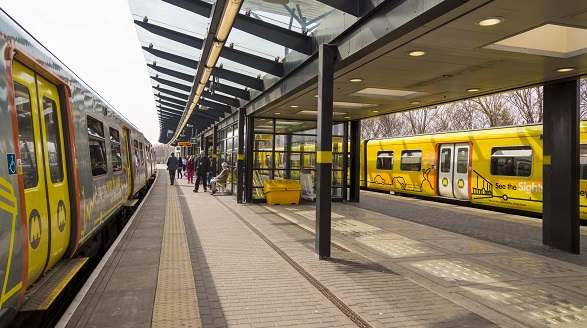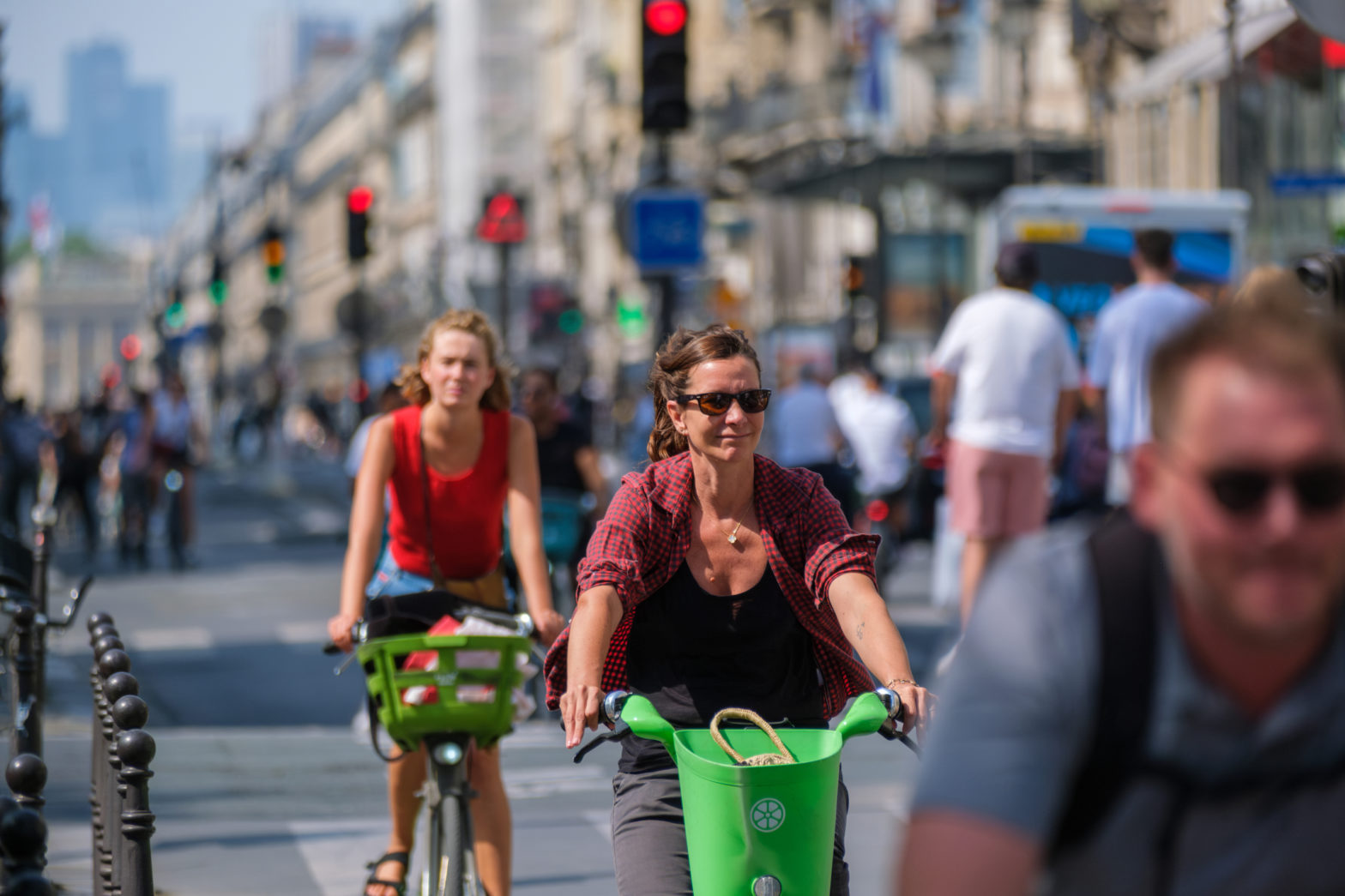
Photo: Merseyrail
How Liverpool is taking control of its transport future
12 May 2022
by Christopher Carey
Christopher Carey talks to Liverpool’s transport lead Liam Robinson about modernising the city’s network and what gets him out of bed in the morning.
Before Liverpool City Region commissioned its first rail fleet in over 40 years, authorities asked the public a simple question: What features would you like to see on your new trains?
“We wanted to be able to involve passengers in the design of the trains – everything from the seat play to where you put your coffee cup or where there are sockets for a USB port or plug,” says Liverpool’s transport chief Liam Robinson.
In total, a group of 40 diverse passengers were selected by the city to provide feedback on over 20 design aspects that made it into production – from an innovative sliding step technology which provides level access for all customers, to the train’s livery and layout of the seats.

“All of those different elements have actually been designed by everyday passengers, a representative sample of the travelling public,” says Robinson. “We really want to put the passenger at the heart of everything that we’re doing.”
Having worked in public transport his whole career, most of it in railway management, Robinson knows a thing or two about trains.
“It’s a heavy rail network, but it’s one that we control, rather than the national government [or a private firm],” he says.
“Because of that level of devolution, we can not only specify the service, but take a long run view of what we want from the network into the future.”
The city decided on a direct procurement model – buying and owning its fleet but allowing day-to-day operations to be run by a private firm – meaning the production process was overseen from inception to completion, allowing the authority to fine-tune various aspects to suit its needs.
Keeping in line with the city’s efforts to hit net zero targets by 2040 or sooner, the new fleet will also feature a fitted battery which allows trains to run on tracks without an electrified rail, consuming 30 percent less energy than the current fleet.
London-style
The city’s rail modernisation efforts are part of a wider plan to deliver an integrated ‘London-style’ transit network across the region, where every mode of transport is integrated under one authority.
“In simple terms we want to create a high-quality network of trains and buses, with integrated smart ticketing, fare capping and such, and then also incorporate new micromobility modes and active travel infrastructure,” says Robinson.
“We’re taking more control over our transport network.”
While the city runs its rail network in a similar way to Transport for London’s overground – municipal owned, privately operated – its buses, the other major organ of mobility in the region, are another story.
For years, an assortment of private operators have been in charge of public bus services, which has sometimes resulted in high prices and patchy services for commuters on low-volume routes.
A legacy of the wave of privatisation that swept across England’s public transport during the late 1980s and early 1990s, bus services have for years been a source of major controversy, particularly in cities across the north.
“One of the mayor’s key pledges to the people in this city is to develop what we call a London-style transport network,” Robinson comments. “We call it London-style because a lot of our residents have been to London and see how seamless transport there is.”
By introducing a franchising system, where private operators would still run services but local government leaders would have control over fares, timetables and routes, the city hopes to deliver a more equitable system that is attractive to all residents.
E-scooters

Besides the traditionally dominant bus and train services, the region is also incorporating new micromobility modes and boosting its active travel network.
In October 2020 Liverpool launched its e-scooter scheme as part of a UK government trial programme.
According to Robinson, the e-scooters have been “very popular” with over 2 million trips taken in the 18 months since the launch.
“We’ve been really pleased so far – about 20 percent of the city’s population has tried a scooter.”
The UK government has said new rules to expand the legal use of e-scooters are “a priority” for the coming year, with plans to introduce a new “low-speed zero-emission vehicle” category.
“We see e-scooters as being part of the public transport network going into the future and if there is a bit more certainty about their long-term route, then we’ve got a great opportunity to look at how we can incorporate them into a more integrated system,” Robinson adds.
Transport plan
People across Liverpool are now being asked to contribute to a public consultation on the region’s new Local Transport Plan (LTP), which will shape the future of the network until 2040.
The plan will align with wider political ambitions, such as supporting the city region’s goal of net-zero carbon emissions by 2040 or sooner.
“We’ve really got to get people out of private cars and onto the best forms of public transport and active travel as part of this – that’s what gets me up in the morning,” Robinson says.
“I think we’ve got a good track record here in the city region, but we’ve got a lot more that we’ve got to do and I’m looking forward to getting stuck into that over the coming months and hopefully years.”






